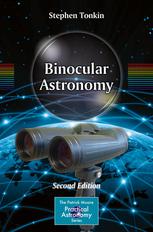

Most ebook files are in PDF format, so you can easily read them using various software such as Foxit Reader or directly on the Google Chrome browser.
Some ebook files are released by publishers in other formats such as .awz, .mobi, .epub, .fb2, etc. You may need to install specific software to read these formats on mobile/PC, such as Calibre.
Please read the tutorial at this link: https://ebookbell.com/faq
We offer FREE conversion to the popular formats you request; however, this may take some time. Therefore, right after payment, please email us, and we will try to provide the service as quickly as possible.
For some exceptional file formats or broken links (if any), please refrain from opening any disputes. Instead, email us first, and we will try to assist within a maximum of 6 hours.
EbookBell Team

5.0
80 reviewsBinoculars have, for many, long been regarded as an “entry level” observational tool, and relatively few have used them as a serious observing instrument. This is changing! Many people appreciate the relative comfort of two-eyed observing, but those who use binoculars come to realize that they offer more than comfort. The view of the stars is more aesthetically pleasing and therefore binocular observers tend to observe more frequently and for longer periods.
“Binocular Astronomy”, 2nd edition, extends its coverage of small and medium binoculars to large and giant (i.e., up to 300mm aperture) binoculars and also binoviewers, which brings the work into the realm of serious observing instruments. Additionally, it goes far deeper into the varying optical characteristics of binoculars, giving newcomers and advanced astronomers the information needed to make informed choices on purchasing a pair. It also covers relevant aspects of the physiology of binocular (as in “both eyes”) observation.
The first edition of this title was praised for its suggested objects for observation and especially for the finder charts for each object. In this second edition, this section is expanded in three ways. There are new objects, with more information on each object, and a re-organization of the objects for binoculars for easier selection for readers.
“Binocular Astronomy” 2nd Edition puts an emphasis on understanding binoculars and their use. The additional content in this second edition reflects the latest developments in technology, available testing techniques, and practical ideas for binocular use. It also responds to the substantially positive reviews of the first edition, and is now even better suited to its target readership.